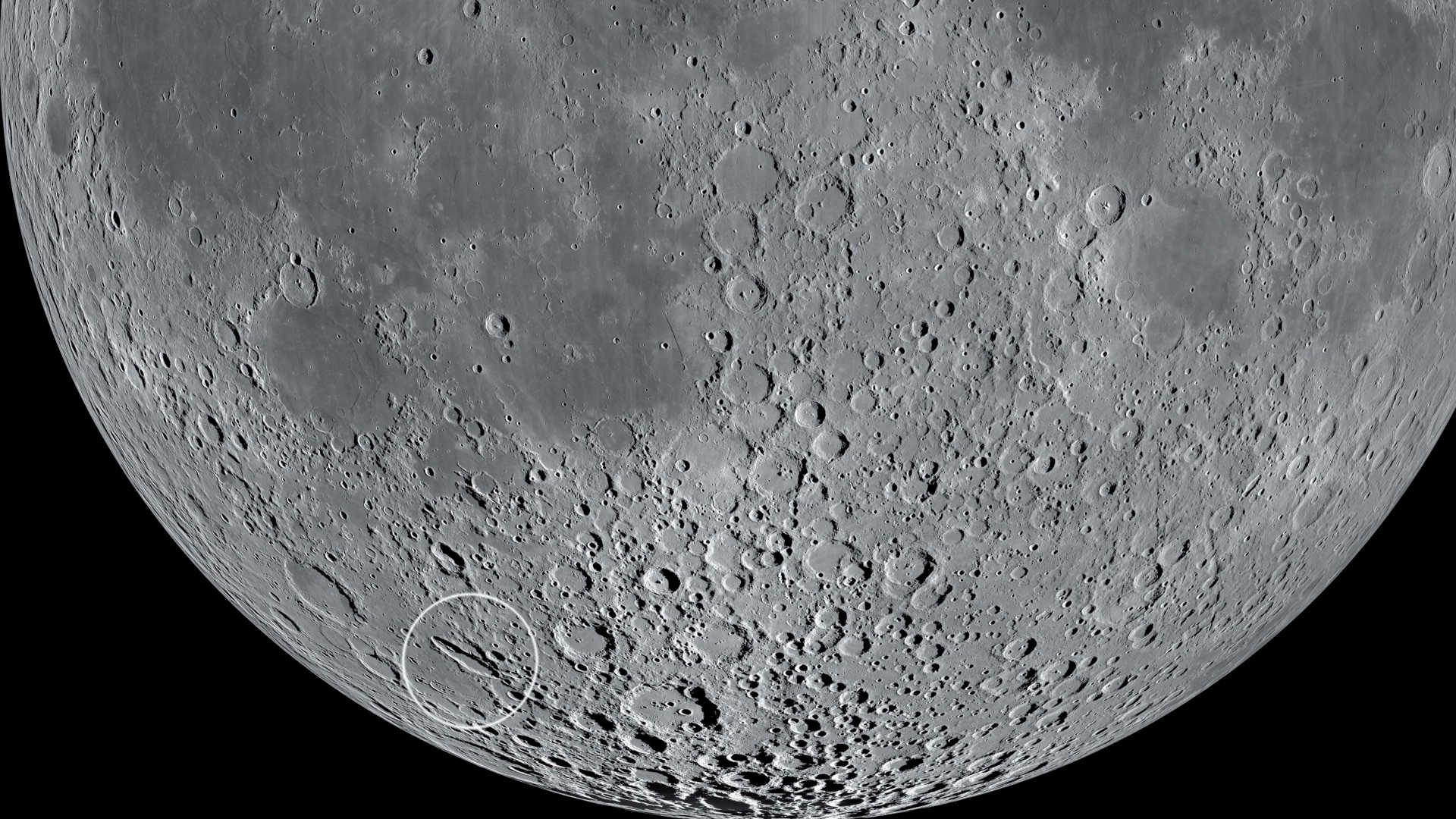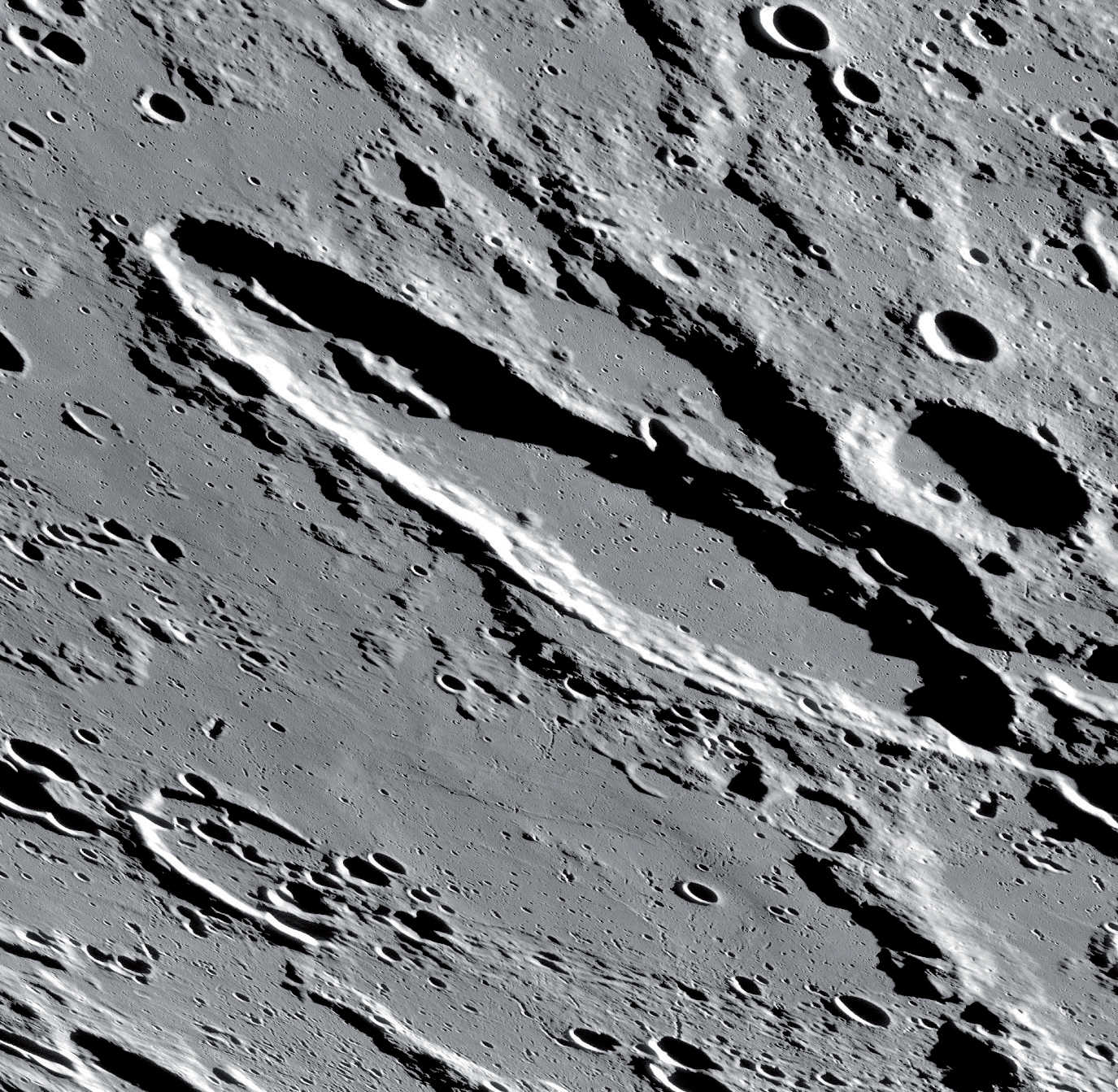Skewed at the edge of the Moon
In the south-west of the Moon, a strangely-shaped impact crater can be seen near the Moon's edge - how did it come about?
 Schiller is highly elliptical with a diameter of 70 km × 180 km. NASA/GSFC/Arizona State University
Schiller is highly elliptical with a diameter of 70 km × 180 km. NASA/GSFC/Arizona State UniversityWhen we observe the Moon, our preferred observation target is usually its numerous craters. They appear in a wide variety of sizes and shapes, and many of them look oval. In fact, however, lunar craters are usually round in shape, and only appear more or less oval because of the distortions caused by perspective. A prominent exception, however, is a truly elongated impact crater close to the Moon's edge in the south-western quadrant. With an area of 70 km × 180 km, this structure is indeed highly elliptical – and this cannot have happened by chance.
Gigantic shoe print
 The linear mountain range in the north-western half of the crater is also striking. NASA/GSFC/Arizona State University
The linear mountain range in the north-western half of the crater is also striking. NASA/GSFC/Arizona State UniversityThe longitudinal axis of the crater runs in a north-west/south-east direction. Schiller seems to consist of at least two main craters, with the diameter increasing to the south-east. The structure appears to be a combination of at least two craters. You could say that Schiller's shape looks like an oversized shoe print. In the north-western half there is an equally unusual mountain range. This appears linear and is divided into two parts.
Impact from an oblique angle
Over time, many theories have arisen about how Schiller might have been formed. Among the theories considered are that it is of volcanic origin, or the overlapping impact of several celestial bodies together with a subsequent flooding with lava which caused the crater walls to disappear. Today it is assumed that a low-speed glancing impact at an angle of less than 3 degrees caused the characteristic shape of the crater. In this scenario, a single crater was created with a series of elliptical and overlapping depressions.
The elongated form of Schiller was reproduced in experiments conducted by NASA during the 1970s. These artificially-created craters even featured the linear mountain range as in the original. Craters with highly elliptical forms have also been found on Mars. These could have been caused by celestial bodies the size of the Mars moons Phobos (27 km × 22 km × 19 km) and Deimos (15 km × 12 km × 11 km), which, in increasingly flatter orbits, eventually struck the surface of Mars. So Schiller could also represent the point of impact of a former satellite of the Moon.
Best visibility 12 or 25 days after New Moon
Author: Lambert Spix / Licence: Oculum-Verlag GmbH
